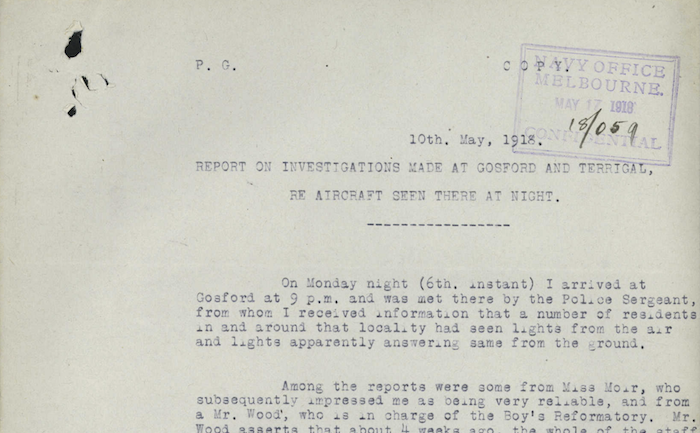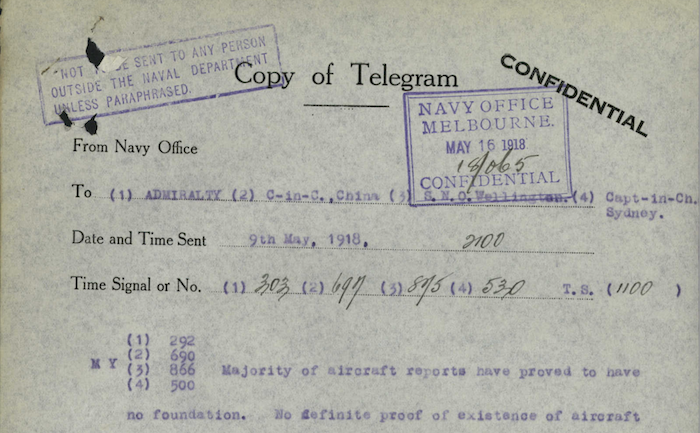Friday, 31 May 1918
NAA: MP1049/1, 1918/066, page 529 is a statement by Captain T. J. Wilson, master of the SS Koolonga, a merchant vessel plying the Newcastle–Port Pirie route. At 8.15pm on 26 May 1918, Koolonga was off Cape Willoughby, Kangaroo Island, South Australia; Wilson was on the bridge when, ‘Casually looking aloft, he saw a dark square […]











